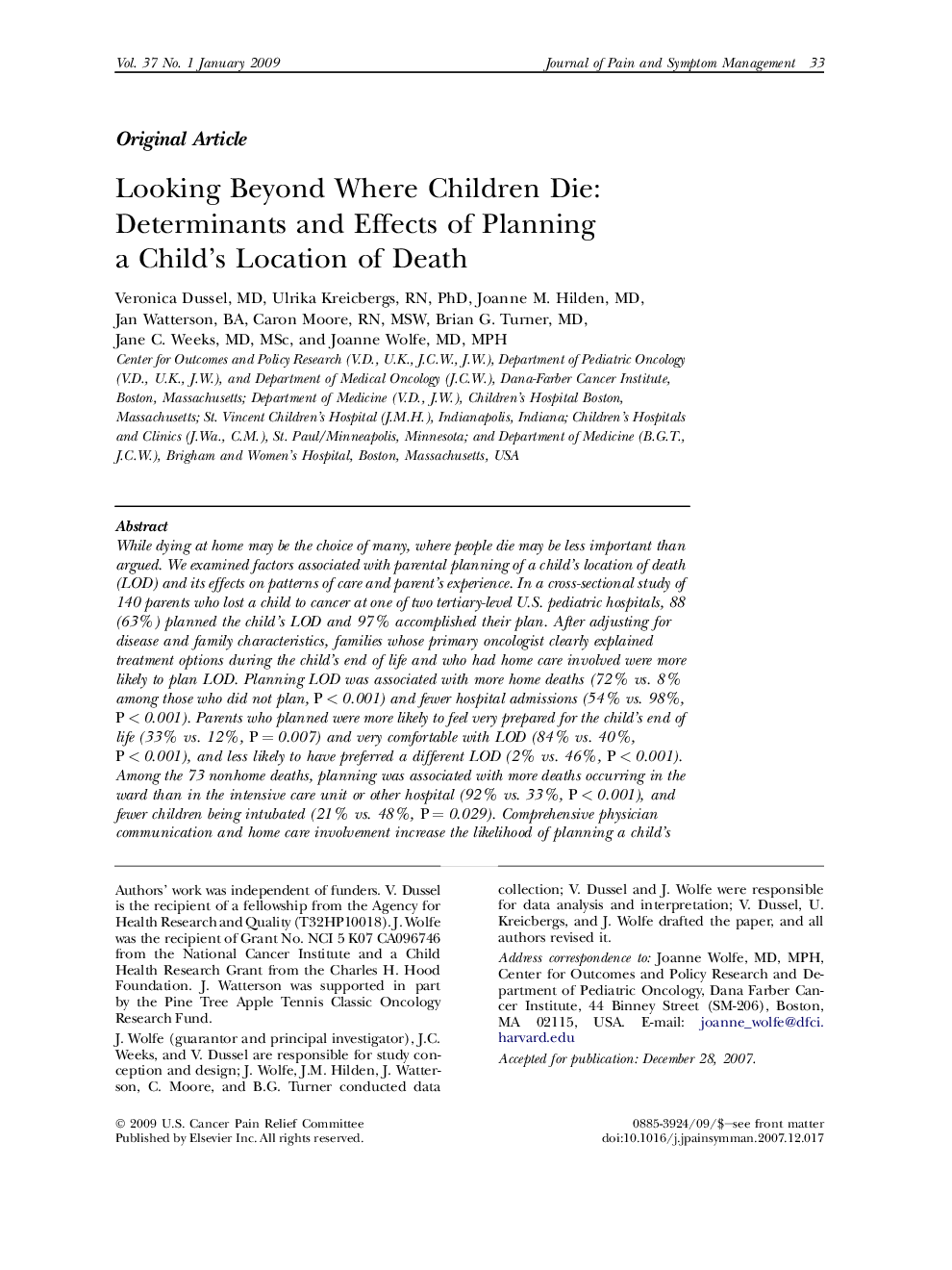| Article ID | Journal | Published Year | Pages | File Type |
|---|---|---|---|---|
| 2724677 | Journal of Pain and Symptom Management | 2009 | 11 Pages |
While dying at home may be the choice of many, where people die may be less important than argued. We examined factors associated with parental planning of a child's location of death (LOD) and its effects on patterns of care and parent's experience. In a cross-sectional study of 140 parents who lost a child to cancer at one of two tertiary-level U.S. pediatric hospitals, 88 (63%) planned the child's LOD and 97% accomplished their plan. After adjusting for disease and family characteristics, families whose primary oncologist clearly explained treatment options during the child's end of life and who had home care involved were more likely to plan LOD. Planning LOD was associated with more home deaths (72% vs. 8% among those who did not plan, P < 0.001) and fewer hospital admissions (54% vs. 98%, P < 0.001). Parents who planned were more likely to feel very prepared for the child's end of life (33% vs. 12%, P = 0.007) and very comfortable with LOD (84% vs. 40%, P < 0.001), and less likely to have preferred a different LOD (2% vs. 46%, P < 0.001). Among the 73 nonhome deaths, planning was associated with more deaths occurring in the ward than in the intensive care unit or other hospital (92% vs. 33%, P < 0.001), and fewer children being intubated (21% vs. 48%, P = 0.029). Comprehensive physician communication and home care involvement increase the likelihood of planning a child's LOD. Opportunity to plan LOD is associated with outcomes consistent with high-quality palliative care, even among nonhome deaths, and thus may represent a more relevant outcome than actual LOD.
